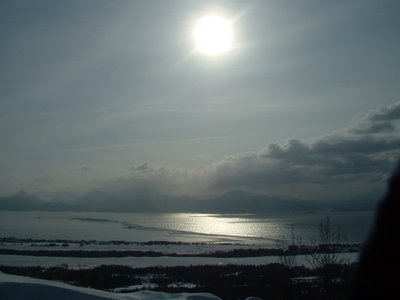 Ok. I admit it. I never really "followed" racing. I don't even actually understand what those guys do in the Tour de France. I know I see a lot of cyclists and they're going really fast. But the actual strategy the event escapes me. (Yellow, polka dotted jerseys? Does it ever strike avid pro cycling fans that some of the revered traditions of the TdF may seem a little, well, kooky to the untrained eye?)
Ok. I admit it. I never really "followed" racing. I don't even actually understand what those guys do in the Tour de France. I know I see a lot of cyclists and they're going really fast. But the actual strategy the event escapes me. (Yellow, polka dotted jerseys? Does it ever strike avid pro cycling fans that some of the revered traditions of the TdF may seem a little, well, kooky to the untrained eye?)Now, having admitted that embarrassing fact for all of the bicycle-blogging world to see, I also have to admit that I have become absolutely captivated by the Iditarod Trail Invitational. With nothing more to watch than spare, often long-delayed reports on racers' current placement on the trail, I have been caught up in a whirlwind of imagination about their trail conditions, method of movement, weather, and just what exactly they might be thinking about as they gaze across endless dunes of windswept snow over the treeless tundra.
The three leaders in the race took nearly 40 hours to pedal/walk/trudge the 90 miles between Rohn and Nikolai. They're pushing five days now to make it the McGrath, a very respectable time in which to finish the race. Five days. 350 miles. Those TdF guys do 350 miles in, what, like three hours?
But I can't help but feel awestruck respect for the racers struggling toward McGrath. Here they are, in their physical prime, clawing through blowing snow and temperatures plummeting to negative-double-digits with 15 mph headwinds. They're living on power bars, jerky, disgusting trail food, the occasional hamburger at a checkpoint. They're relying on human-powered transportation in one of the few places left in this overpopulated world where you can travel 100 miles between a human settlement of any kind. They're doing it all as fast as they can, as hard as they can, and all for this blurry-eyed, sleep-deprived slump over the finish line. Then they can return to their homes in Anchorage, London and South Africa, read their name in the massive scrunch of small gray type in the Anchorage Daily News, and tell their friends that they completed the "world's longest winter ultra race" - which, of course, none of their friends will have ever heard of.
This isn't the Tour de France. It's not even the Iditarod dogsled race. There aren't any television cameras, news reports or big payouts at the end. Whatever these racers do out there, they're doing entirely for themselves. You gotta respect that.











